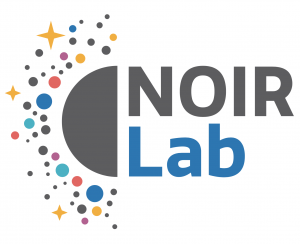cster: Rob Sparks. Guest: Dr. Kishalay De

Title: Catching A Star Devouring A Planet
Organization: NOIRLab
Links: NOIRLab social media channels can be found at: https://www.facebook.com/NOIRLabAstro ; https://www.instagram.com/noirlabastro/ ; https://www.youtube.com/noirlabastro ; @NOIRLabAstro
NOIRLab Press Release: https://noirlab.edu/public/news/noirlab2311/ ; MIT Press Release: https://news.mit.edu/2023/astronomers-spot-star-swallowing-planet-0503 ; JPL Press Release: https://www.jpl.nasa.gov/news/caught-in-the-act-astronomers-detect-a-star-devouring-a-planet
Description:
By studying countless stars at various stages of their evolution, astronomers have been able to piece together an understanding of the life cycle of stars and how they interact with their surrounding planetary systems as they age.
This research confirms that when a Sun-like star nears the end of its life, it expands anywhere from 100 to 1000 times its original size, eventually engulfing the system’s inner planets. Such events are estimated to occur only a few times each year across the entire Milky Way. Though past observations have confirmed the aftermath of planetary engulfments, astronomers have never caught one in the act, until now.
Bio: Rob Sparks is in the Communications, Education and Engagement group at NSF’s NOIRLab in Tucson, Arizona
Dr. Kishalay De is a NASA Einstein postodoctoral fellow and (subsequently) MIT Kavli Institute postdoctoral fellow at the Massachusetts Institute of Technology. Kishalay works with wide-field imaging surveys on the ground and in space to discover cosmic fireworks from stellar binaries in our Galaxy and in the distant Universe. Using panchromatic follow-up facilities, he tries to understand the role of stellar cataclysms in shaping the unvierse as we “see” it in light and “hear” it in gravitational waves.
Kishalay obtained his PhD in Astrophysics from the California Institute of Technology in 2021, under the supervision of Mansi Kasliwal. As part of his thesis, he served as the data pipeline lead and helped commission Palomar Gattini-IR, the first wide-field infrared time domain survey to study dust obscured eruptions in the Milky Way. Using the Zwicky Transient Facility wide-field optical time domain survey, he helped construct the largest volume-limited sample of nearby supernovae to study faint and fleeting explosions from the eruptions of helium shells on white dwarfs and births of neutron stars in compact binary systems. Previously, Kishalay obtained my undergraduate degree in Physics from the Indian Institute of Science in 2016, working with Yashwant Gupta and Prateek Sharma on high time resolution studies of radio pulsars.
End of podcast:
365 Days of Astronomy
=====================
The 365 Days of Astronomy Podcast is produced by Planetary Science Institute. Audio post-production by Richard Drumm. Bandwidth donated by libsyn.com and wizzard media. You may reproduce and distribute this audio for non-commercial purposes.
This show is made possible thanks to the generous donations of people like you! Please consider supporting to our show on Patreon.com/365DaysofAstronomy and get access to bonus content.
After 10 years, the 365 Days of Astronomy podcast is entering its second decade of sharing important milestone in space exploration and astronomy discoveries. Join us and share your story. Until tomorrow! Goodbye!

